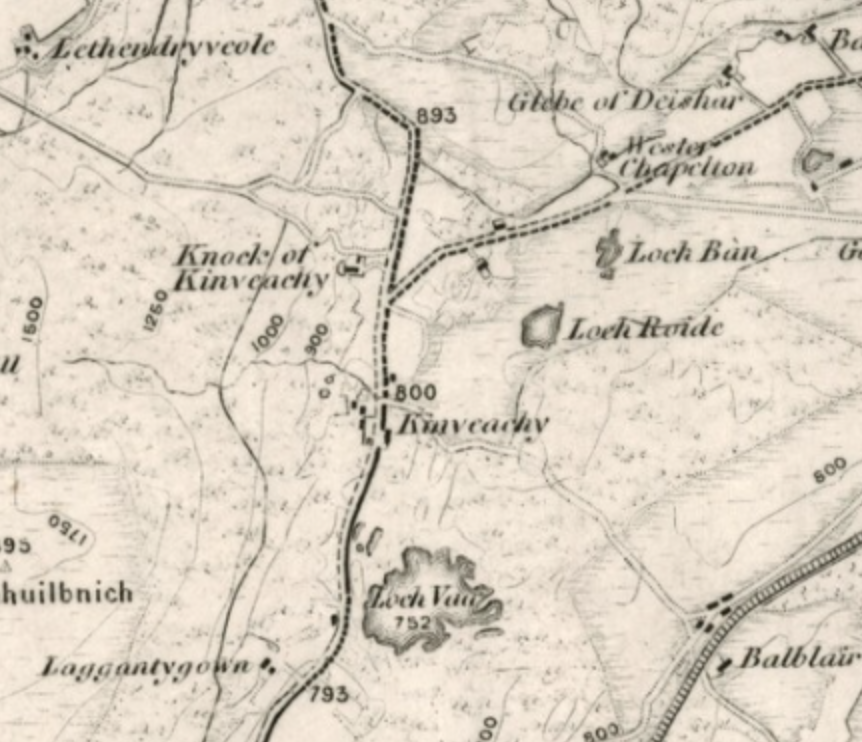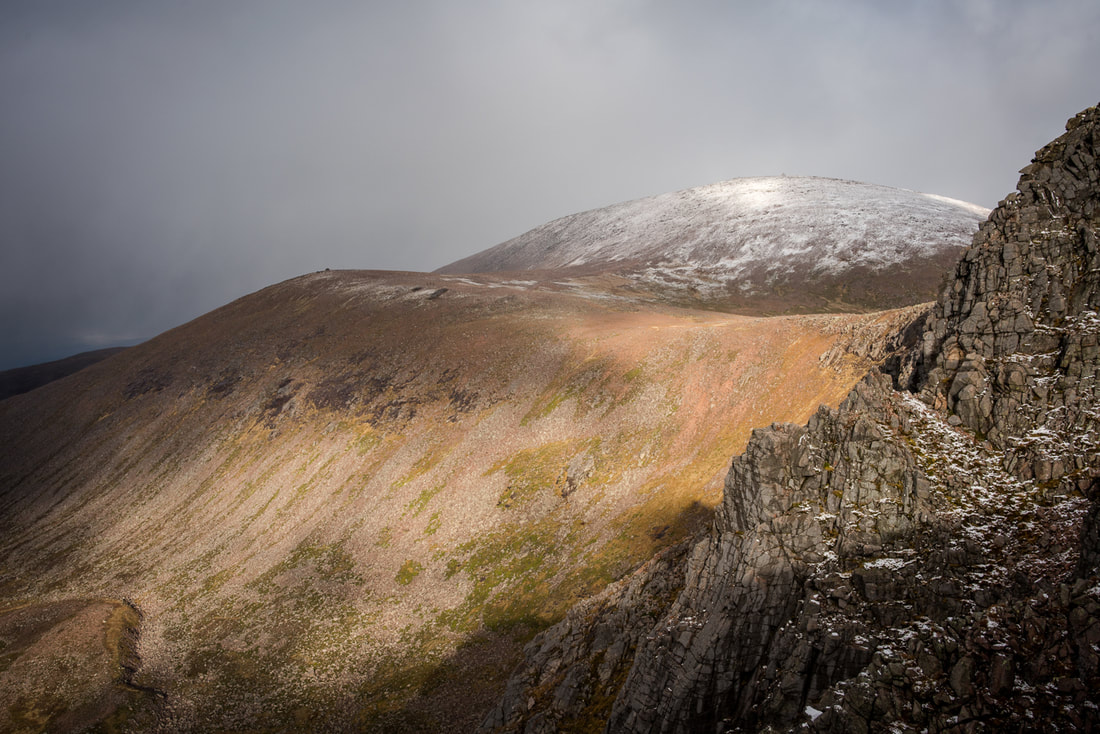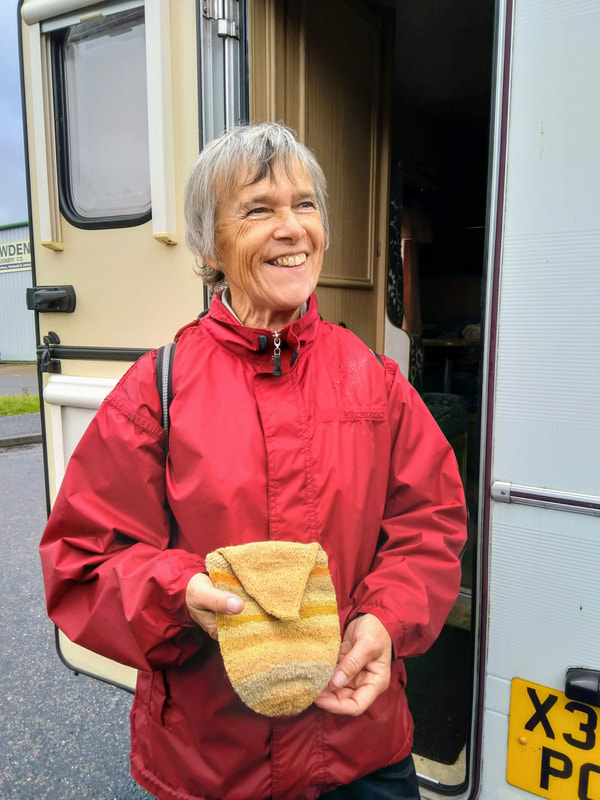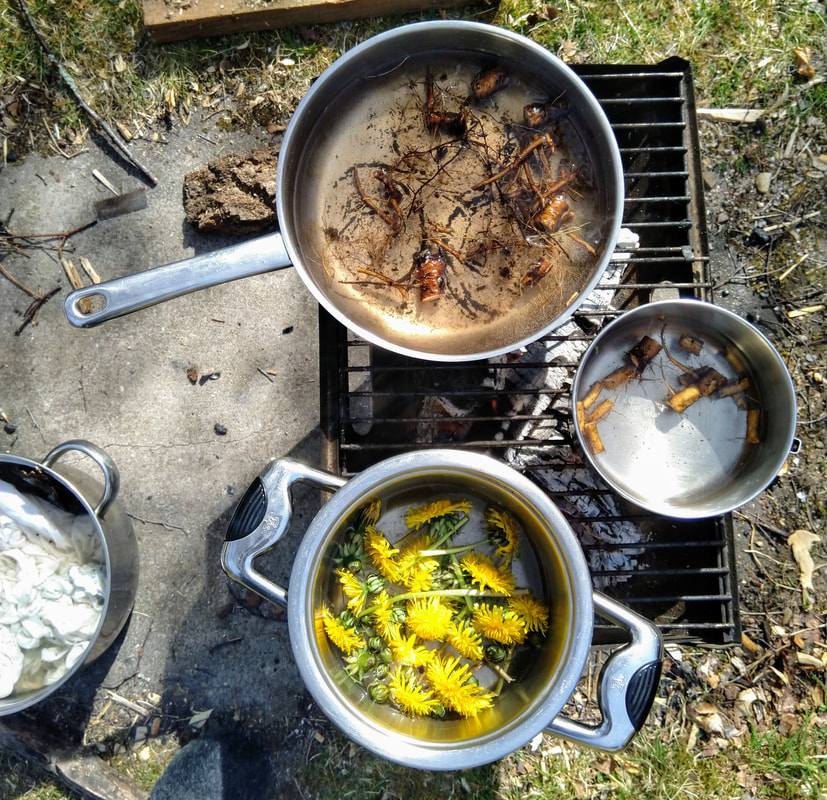 Map of Kinveachy from 1877, National Library of Scotland It's #FolkloreThursday! In the woods of Kinveachy, between Aviemore, Boat of Garten and Carrbridge, there lives a giant. He's a wise and wily giant, and, thinking that people may wish to kill him, removed his heart and hid it under a stone in Kinveachy Woods. As everyone knows, the only way to kill a giant is to destroy its heart. Now the only way to kill the Kinveachy giant would be if somebody laid their hat, or bonnet, on top of the stone where the heart was hiding. This stone became known as the Bonnet Stone. Easy enough! But the giant's heart was also wily, and whenever it saw somebody approach the stone it promptly hopped out to hide under another stone. There are many, many stones in the woods of Kinveachy so we can assume that the giant is alive and well to this day! Kinveachy means Head of the Birch Wood/Forest in Gaelic. If you'd like to hear more stories and folktales of Aviemore and the Cairngorms, join an upcoming short guided walk!
0 Comments
Not really #FolkloreThursday this week, more folk skills! About a month ago I ran a Storywalk with some tremendously lovely people, one of whom turned out to be Debbie Zawinski, otherwise known as the Feral Spinner. She forages material to spin when out on walks (think bits of sheep wool stuck in fences), and spins it into yarn with a stick - the simplest form of spinning. She then dyes it using foraged material, and knits it into wonderful quirky creations. Here's an example she showed me at the end of the walk: a knitted pocket dyed with materials such as nettles, yarrow, birch leaves, and various types of bark. There's so much around us which can be used, most of the year! During lockdown I set myself up with an outside fire and attempted to dye white cotton strips with dandelion root, dandelion flowers, and dock root - but lacking any decent alums or mordants (turns out they're quite important!) the results are not even worthy of this page. Lots of fun and learning was had however. :) Debbie's book 'In the footsteps of sheep: tales of a journey through Scotland, walking spinning and knitting socks' is available from a few online knitting shops. If you'd like to hear more ways of life and folktales of Aviemore and the Cairngorms, join an upcoming short guided walk!
 The first snows of winter at Cairngorm, Oct 2020 © David Lintern Forget Game of Thrones, 'winter is coming.' Beira the Goddess of Winter is coming! After Oidhche Shamhna (pronounced oy-cha how-na), Halloween, she begins her reign for the next six months, until Bealtainn at the beginning of May. Now, Beira is a cailleach (pronounced cal-yach or kayach), alternatively described as an old woman, wise woman, hag, crone, witch - and creator. Beira and her eight sisters lived at the very centre of the earth. Each day they worked tirelessly, hewing and mining rocks from the very centre of the earth, and placing them carefully into woven creel baskets on their backs. When the baskets were full, they made their way out of the centre of the earth, to the ocean. From there, each of the sisters took a different direction and strode off through the waters. Beira too, picked a direction and when she grew tired, she stopped and began unloading the rocks from her creel, until it was empty. Now, Beira wielded a mighty magic hammer - a bit like Thor's hammer - and with her hammer began shaping and carving the rocks into glens and mountains, lochs and corries. This land that Beira shaped with her hammer became Alba, or Scotland. When she completed her work, her woven white plaid which she wore had become quite grubby, so off she strode to the ocean to give it a good wash. She scrubbed it hard, whirling the dark waters around and around, at a place on the West Coast of Scotland we now call Coire Bhreachain, or Corryvreckan, which is one of the largest whirlpools in the world. When her plaid was white again, Beira lifted it out of the ocean and laid it carefully to dry across the tops of the mountains. The white lying across the mountain tops signified the coming of winter, and Beira's reign. Throughout winter, she takes her place at the highest mountain in Alba, Beinn Nibheis, or Ben Nevis, and from her mountain throne waits, and watches, for the first sign of the coming of her sister Brìde, or Bride, the goddess of summer. Always, Beira and Brìde quarrel, and always, Brìde triumphs for a while, and we have summer, while Beira rests, and then Beira triumphs and again we have winter. So, when you next look out at the mountain tops - perhaps to the northern corries of the Cairngorms - and there is snow, remember that it's Beira's white plaid and we are all under her reign as goddess of winter until the coming of her sister Brìde at Bealtainn. A huge thank you to writer and photographer David Lintern, who took the stunning image of Cairngorm with its first winter snow of this year. If you fancy improving your photography skills, he offers bespoke tuition and workshops (with or without wild camping!) around the Cairngorms and beyond. Have a look at his work here. If you'd like to hear more stories and folktales of Aviemore and the Cairngorms, join an upcoming short guided walk!
|
AuthorSarah Hobbs - read more on the About page. Archives
July 2023
Categories |


 RSS Feed
RSS Feed